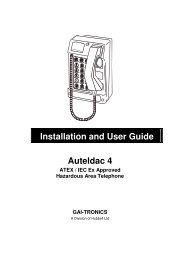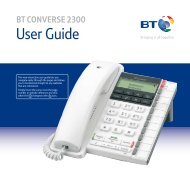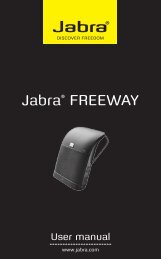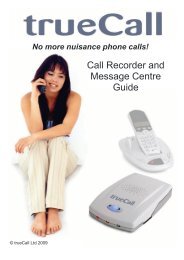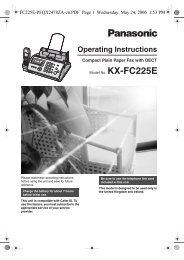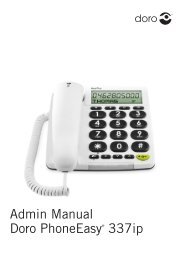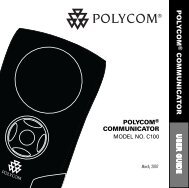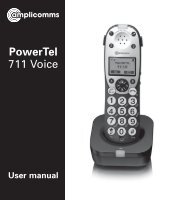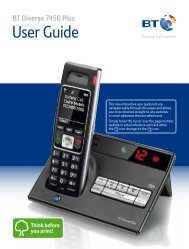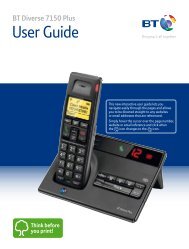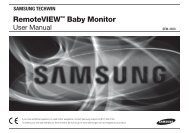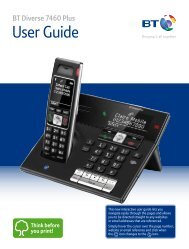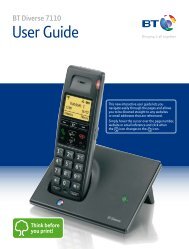Jabra PRO 9460/9470 User Manual - Comfort Telecommunications ...
Jabra PRO 9460/9470 User Manual - Comfort Telecommunications ...
Jabra PRO 9460/9470 User Manual - Comfort Telecommunications ...
You also want an ePaper? Increase the reach of your titles
YUMPU automatically turns print PDFs into web optimized ePapers that Google loves.
8.15<br />
Dealing with Density Issues<br />
DECT technology uses low-power radio technology for wireless transmission. Because DECT uses a dedicated<br />
radio-frequency band, it is relatively immune to interference from other products using radio technologies<br />
commonly used in offices such as wireless routers or wireless networks. Likewise, DECT will not interfere with WiFi<br />
networks.<br />
You might, however, experience some performance degradation if you install many <strong>Jabra</strong> <strong>PRO</strong> headsets in<br />
one area – the limits are explained below. DECT has a built-in automatic channel-allocation which attempts to<br />
allocate channels in a way which minimizes the likelihood of interference. The number of channels is always<br />
limited, which may have some implications for large scale deployment.<br />
Performance issues manifest themselves as audible clicks and pops. In the most severe cases, they manifest<br />
themselves as the inability for some headsets to establish the wireless link.<br />
The basic limit you should be aware of is the number of headsets in one area before DECT channels are re-used:<br />
- 80 headsets for EU DECT (normal audio), or 40 headsets for EU DECT (wideband audio)<br />
- 45 headsets for US DECT (normal audio), or 22 headsets for US DECT (wideband audio)<br />
The use of wideband audio gives an additional constraint as wideband audio reduces the number of headsets by<br />
a factor of 2.<br />
If the number of headsets in any one area is below the limit indicated above, there should be no performance<br />
issues. Even in those lower density situations, you are advised to separate bases from each other by at least 2 - 4m.<br />
If you exceed the density limits, you should configure the products to operate in low-power mode. You must plan<br />
using the following conservative average areas per headset and base-to-base distances:<br />
- 25m 2 – 49m 2 for EU DECT (i.e 5 – 7m between bases).<br />
- 49m 2 – 100m 2 for US DECT (i.e. 7 – 10m between bases).<br />
Be aware of the fact that large metal objects or large glass windows, especially those covered with a metallic<br />
layer, create many radio reflections. This forces you to plan even more conservatively. The average areas are valid<br />
for an average headset-to-base distance of < 5m — otherwise more conservative planning is needed.<br />
The area referred to above depends on the building layout. It could be an open space office, or a set of collocated<br />
offices separated by lightweight walls. Offices far apart, say >100m apart, or shielded by heavy concrete walls<br />
should not be considered one area. The above planning figures are valid if most users are near their bases<br />
(< 3m distance). If most users are > 5m away from their bases, you should roughly double the recommended area.<br />
english<br />
<strong>Jabra</strong> <strong>PRO</strong> <strong>9460</strong>, <strong>9460</strong>-Duo and <strong>9470</strong> <strong>User</strong> manual<br />
51



